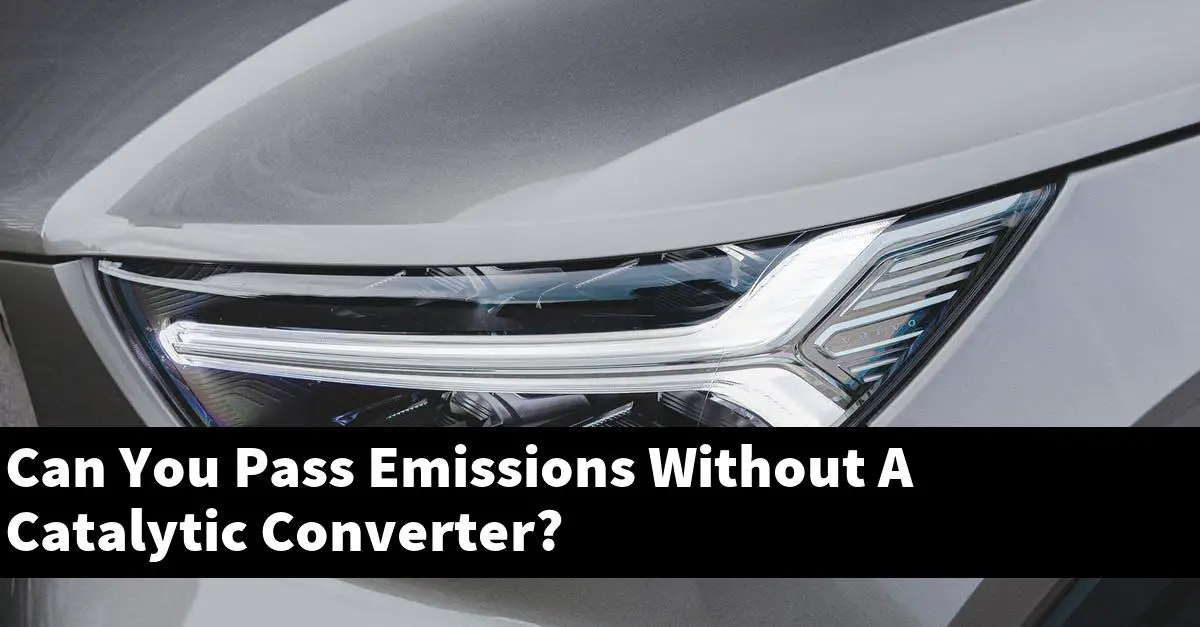A catalytic converter is a device used to convert harmful emissions from an engine into less harmful emissions. The converter is usually located between the engine and the muffler.
It consists of a metal casing filled with a catalyst, such as platinum or palladium. The catalyst helps to break down the harmful emissions into less harmful emissions, such as carbon dioxide and water vapor.
There are a few ways to test for emissions without a catalytic converter. One way is to use a tailpipe emissions tester.
This tester measures the amount of emissions coming out of the tailpipe. If the emissions are above the limit, the vehicle will fail the test.
Another way to test for emissions is to use an infrared emissions tester. This tester measures the amount of infrared light coming from the exhaust.
If the emissions are above the limit, the vehicle will fail the test.
How long can you drive without a catalytic converter?
Catalytic converters are designed to break down harmful pollutants, including nitrogen oxides, into less harmful molecules in the exhaust. A catalytic converter will stop working after it has degraded to the point where it cannot efficiently break down these pollutants.
In the event that the vehicle is driven with a catalytic converter that has degraded to the point where it cannot break down these pollutants, the vehicle will emit a “check engine” light. The duration that a catalytic converter can be driven without emitting a “check engine” light is typically around 100,000 miles.
What year were catalytic converters required?
The catalytic converter was mandated for passenger cars in the United States in 1975.
What happens if you don’t have catalytic converter?
A catalytic converter helps reduce the amount of harmful emissions from a vehicle. Without a converter, the vehicle’s engine will produce more pollutants than necessary.
This can cause damage to the engine, respiratory problems for drivers, and a variety of other dangers.
Do you need a catalytic converter to pass inspection in texas?
A catalytic converter is not required to pass an inspection in Texas, but it is still recommended for emissions reduction. A catalytic converter is a device that reduces the amount of pollutants emitted from a vehicle.
The device works by breaking down the pollutants into smaller pieces, so they are less harmful to the environment.
How to pass emissions with a modified car?
There are many ways to modify a car to pass emissions tests. The most common modifications include adding a aftermarket exhaust, modifying the air filter, and replacing the engine.
Other modifications, such as adding a catalytic converter, are also possible, but are more difficult and expensive to make.
Can you drive around without a catalytic converter?
Depending on the make and model of your car, you may be able to drive without a catalytic converter. Most cars made after 1996 are not required to have one, but it is still a good idea to have one in case of an accident.
Catalytic converters break down pollutants in the exhaust, which makes the exhaust less harmful to the environment.
Conclusion
No, you cannot pass emissions without a catalytic converter. A catalytic converter is required in order to reduce harmful emissions from your vehicle.


